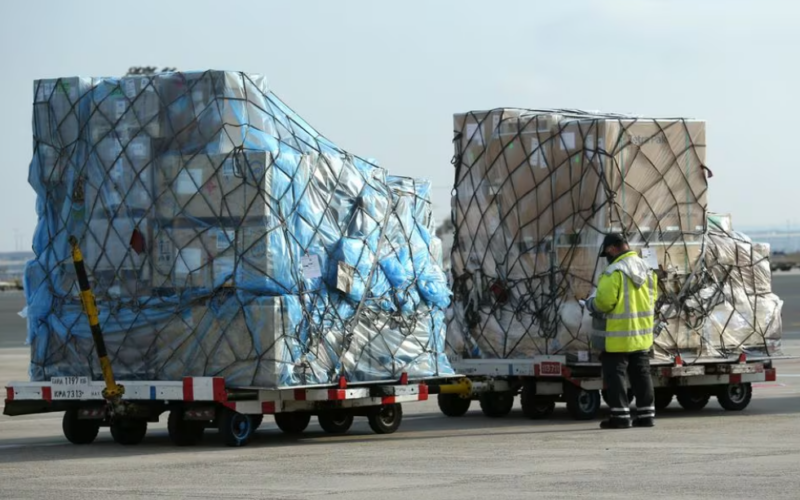The escalating attacks on Red Sea shipping, particularly by Yemen’s Houthi militia, have triggered a surge in demand for air cargo services as manufacturers seek alternative routes to transport their products. The Red Sea is a crucial artery for global trade, connecting Asia’s manufacturing hubs to Europe and the Americas via the Suez Canal. However, the prolonged attacks have disrupted shipping, prompting logistics firms to explore air freight options. This unexpected development is a potential boon for the air cargo sector, which has been grappling with subdued post-pandemic demand and overcapacity.
Key Points:
- The Red Sea has been a vital route for approximately 12% of global shipping traffic accessing the Suez Canal. Attacks by Yemen’s Houthi militia over more than two months have not only affected companies but also raised concerns among major powers, escalating tensions in the region.
- Despite the shipping crisis, air freight prices have remained relatively stable, partly due to a seasonal lull in demand. However, data from Freightos indicates a notable surge of 91% week-on-week in rates on the China-to-Europe air cargo route.
Increased Interest in Air Cargo: - Logistics firms, including global players like Kühne+Nagel, are reporting a substantial increase in discussions and proposals related to air capacity. Companies such as Korean Air Cargo are witnessing growing demand and an uptick in customer inquiries.
- The attacks have forced shippers to consider costlier routes, adding weeks to delivery times and making air freight a more attractive option.
While air freight is generally costlier than sea freight, the constraints imposed by the shipping crisis have shifted the balance. - Logistics firms, including Schenker, Bollore Logistics, and C.H. Robinson, are securing additional air freight space. Automaker Stellantis has turned to air freight to manage temporary disruptions caused by the shipping challenges.
- Customers are exploring multi-modal routes, combining sea and air transport, to navigate the challenges in the affected regions. Some are opting for routes such as shipping by sea to the Middle East and then using air freight to reach European destinations.
- The global economic slowdown has muted the immediate impact of the Red Sea attacks on trade flows. Cargo demand, as reflected in the Baltic Air Freight Index, has shown a decline, down 34% last week from a year ago.
- The longer the Red Sea crisis persists, the more manufacturers are likely to turn to air freight to alleviate pressure on sea freight capacity. Logistics experts highlight that a prolonged situation could bring the industry closer to a ‘tipping point’ where air freight becomes a more essential conversion for supply chains.
The disruptions caused by the Red Sea shipping crisis have unexpectedly shifted the dynamics of global trade, prompting manufacturers and logistics firms to explore air cargo options. This shift, driven by challenges in traditional shipping routes, offers a potential lifeline to the air cargo sector, which has been navigating the complexities of a post-pandemic world. As the situation unfolds, the adaptability of supply chains and the resilience of the air freight industry will play a pivotal role in mitigating the impact of geopolitical events on global trade.








